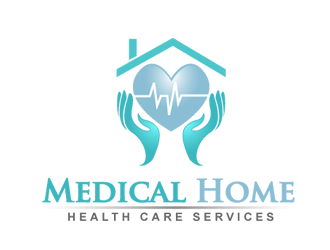
Home health care is an important part of Medicare's long-term care financing. This provides temporary medical and non-medical support to assist people in living more independently and getting around better. There are many benefits to home health care, such as reducing hospital stays and the need for prolonged stays. Medicare's home health benefit is not meant to provide long-term healthcare.
The situation has made it difficult for Medicare administrators to make a decision. It is important to slow down the growth of program spending, but it is also crucial that the Medicare beneficiaries are met. These choices must be made in a way that is both balanced and effective.
Medicare's home health benefit was created specifically to support the discharge of the elderly from a hospital. Medicare administrators have struggled to implement this policy in the past. They tried to balance the need for high-quality, low cost care with the need to reduce institutional use.

The most significant change to the home health benefit came in the early 1990s when a new statute was passed to promote the use of home health care by providing for prospective payments to providers. As a result, more beneficiaries received home health care services. This led to an increase of over 70% in the number of visits. The number of Medicare beneficiaries who received home medical care increased by less than the percentage of total Medicare patients. However, the average length stay rose from 4.5 Days in 1989 to 8.6 Days in 1991.
The relatively small number of beneficiaries who require the home health benefit have accounted for a large portion of the cost. It is therefore not surprising that administrative efforts have been made to limit coverage.
Recent developments in Medicare's Medicare Home Health Benefit have been notable because of a shift in care focus from short term to long-term. Specifically, it has moved from financing care confined to short-term acute illnesses to financing care aimed at functionally impaired individuals. It was a major supporter of long-term care at nursing homes in the early 2000s.
Despite these successes however, the home healthcare benefit is still a matter of concern. While the Medicare home care benefit has been a key component of Medicare's long-term financing, there are still concerns regarding the program's payment mechanisms. Limiting the payment scope could lead to reduced access for older Americans who have the most pressing needs.

While the Medicare home health benefit plays a part in LTC financing, Congress must ensure that it is cost-effective and efficient. It must provide the services that older adults require.
Another example is the surprise bill. Surprise bills are services provided by non-emergency providers that are not included in the patient's regular health plan. These could include visits to a doctor, home-delivery meals and physical therapy. Some may argue that a surprise bill is a more significant occurrence than a copayment, but the fact remains that these expenses are reimbursed by Medicare.
FAQ
What are the different health care services?
Patients need to know that they are able to access quality healthcare at any hour. We can help you, whether you have an urgent need or a routine checkup.
We offer many types and types of appointments. We offer home care visits to those who live far from our clinic. And if you don't feel comfortable coming into our office, we'll ensure you receive prompt treatment at your local hospital.
Our team is made up of nurses, doctors and pharmacists as well dentists. We are committed to providing outstanding patient service. We aim to ensure that each visit is as convenient and painless as possible.
What does "health promotion" mean?
Health promotion is helping people live longer, stay well, and be healthier. It focuses more on preventing disease than treating it.
It covers activities such:
-
Eat right
-
You need to get enough sleep
-
exercising regularly
-
Staying active is key to staying fit
-
Smoking is not permitted
-
managing stress
-
Keep up with vaccinations
-
Alcohol abuse prevention
-
Regular checkups and screenings
-
learning how to cope with chronic illnesses.
What happens if Medicare disappears?
The number of Americans without insurance will rise. Some employers will terminate employees from their benefits plans. In addition, many seniors will face higher out-of-pocket costs for prescription drugs and other medical services.
Statistics
- About 14 percent of Americans have chronic kidney disease. (rasmussen.edu)
- For the most part, that's true—over 80 percent of patients are over the age of 65. (rasmussen.edu)
- Price Increases, Aging Push Sector To 20 Percent Of Economy". (en.wikipedia.org)
- Consuming over 10 percent of [3] (en.wikipedia.org)
- Over the first twenty-five years of this transformation, government contributions to healthcare expenditures have dropped from 36% to 15%, with the burden of managing this decrease falling largely on patients. (en.wikipedia.org)
External Links
How To
What are the key segments in the Healthcare Industry?
The healthcare industry includes the following key segments: diagnostics/biotechnology, pharmaceuticals/diagnostics, therapeutics/health information technology, medical device, and equipment.
Blood pressure monitors, defibrillators and stethoscopes are all medical devices. These devices are designed to diagnose or prevent disease.
Pharmaceuticals are medicines prescribed to relieve symptoms or treat disease. You can find examples such as antibiotics, antihistamines or contraceptives.
Diagnostics are tests done by laboratories to determine illness or injury. You can get blood tests, urine samples or CT scans.
Biotechnology refers to using living organisms (such as bacteria) to produce useful substances that can be applied to human beings. Some examples include insulin, vaccines, and enzymes.
Therapeutics are medical treatments that treat diseases or alleviate symptoms. They can involve drugs, radiation therapy or surgical interventions.
The computer software programs called health information technology help doctors and their teams to manage patient records. It helps them keep track of which medications they're taking, when they should take them, and whether or not they are working properly.
Equipment used in the diagnosis, treatment, and monitoring of medical conditions or illnesses is called medical equipment. Examples include dialysis machines, pacemakers, ventilators, operating tables, etc.